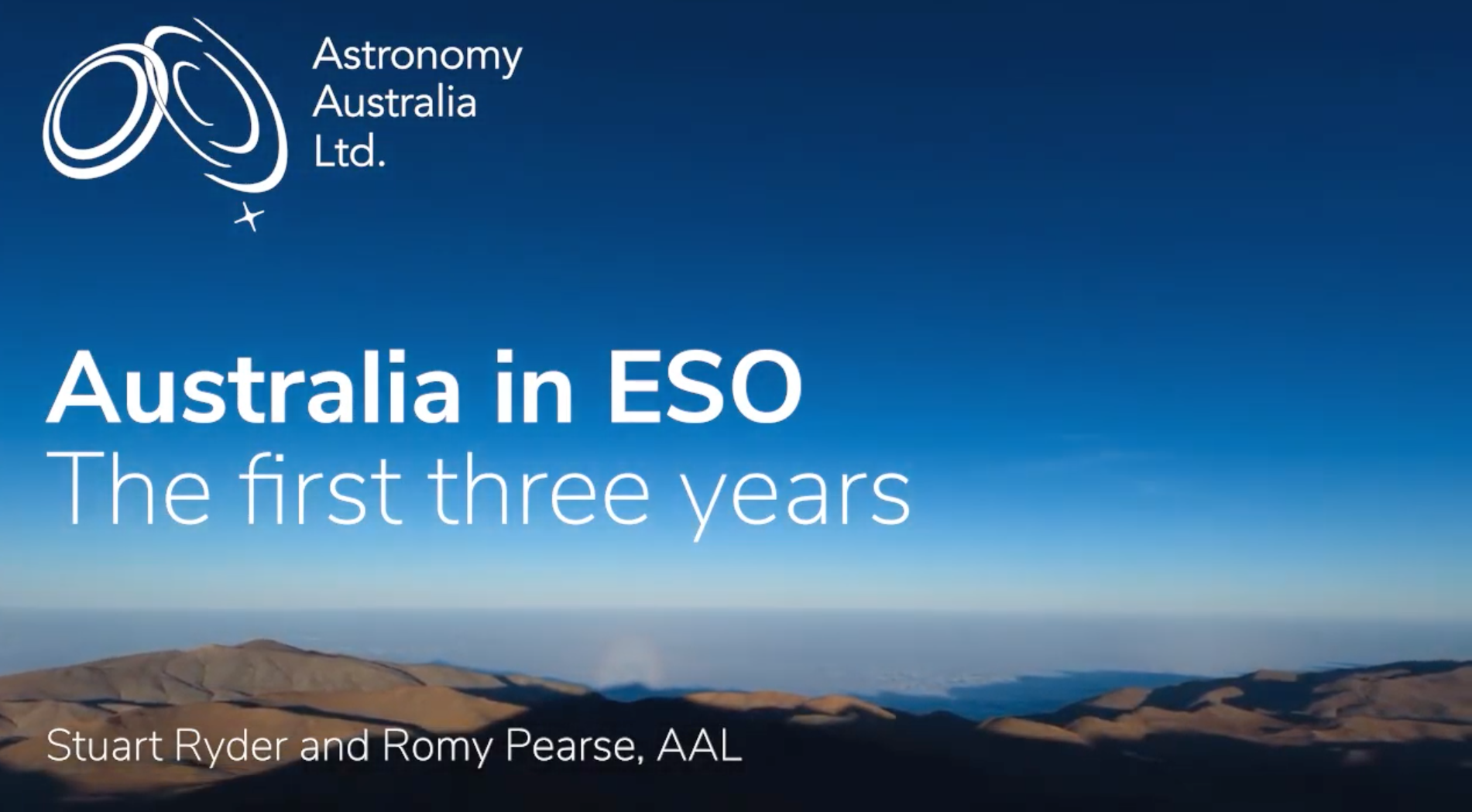Administrative and user support
AAL routinely collates other data (via annual polls) from Australian ESO Principal Investigators, providing complementary information to that collected by the ESO Users Committee. This includes the fraction of ESO time that was ultimately usable, the degree to which new collaborations were formed, the number of early career researchers who benefit from data access, the ARC research grants that helped support and/or will benefit from these observations, and any resulting outreach activities.
AAL also assists DISER in their appointment of Australian astronomy representatives for the ESO Council, Scientific and Technical Committee, and Users Committee, by running an open nominations process and coordinating the shortlist of applicants for Departmental and ESO consideration. AAL’s Board Chair is a member of DISER’s ESO Coordinating Group, and AAL staff also serve on the working group that is helping DISER to develop the business case for full membership of ESO.
In terms of providing support for the Australian ESO user community, AAL facilitates an exchange of information via the Australian ESO Forum hosted on the AAL website. The Forum features monthly blog posts by ESO users sharing their experiences (e.g., as visiting observers, graduate or summer students at ESO), as well as the latest results coming from Australian-led use of ESO facilities. It summarises Australian demand for, and allocations of ESO time, while also maintaining a Frequently Asked Questions (FAQ) page for current and potential users, and provides a condensed version of the latest Call for Proposals.
Communications and Outreach
All ESO announcements relevant to the Australian-based astronomy community are regularly disseminated by AAL via a number of different communication channels (i.e., the Astronomical Society of Australia’s member e-mail list, AAL’s social media accounts and email updates to member representatives). These include ESO Fellowship and Studentship opportunities, scientific and technical career opportunities, and upcoming local/international workshops and conferences. To support Australian researchers attempting to gain access to ESO infrastructure, AAL also facilitates ESO proposal writing workshops for any institution(s) that requests it and provides real-time, face-to-face responses to ESO queries from Australian users (when time-zone differences to both Germany and Chile preclude such interaction during normal working hours). Feedback from users has indicated this support is especially appreciated in the hours leading up to proposal deadlines, when ESO is not able to be of assistance. AAL serves as the Australian node of the ESO Science Outreach Network (ESON) in coordinating and promoting ESO media releases, particularly those with some Australian involvement.
Back in 2018 AAL worked with ESO to facilitate remote participation at annual La Silla Paranal Observatory User Workshops. Ensuring the availability of recordings after these events, AAL has broadened Australian participation well beyond the traditional in-person events held at ESO headquarters in Garching, Germany. Opening up the observatory to the possibilities of videoconferencing also made it far easier for ESO to rapidly switch to entirely on-line workshops when the COVID-19 pandemic struck.

 COVER: The Milky Way seen above the Australian Square Kilometre Array Pathfinder (ASKAP) – a radio telescope located in Western Australia. ASKAP’s 36 dishes (five visible here) work together as an interferometer to precisely locate radio sources. Astronomers using ASKAP have for the first time identified the host galaxy of a single, none-repeating Fast Radio Burst (a flash of radio emission lasting only a few milliseconds) in optical images obtained with ESO’s Very Large Telescope.
COVER: The Milky Way seen above the Australian Square Kilometre Array Pathfinder (ASKAP) – a radio telescope located in Western Australia. ASKAP’s 36 dishes (five visible here) work together as an interferometer to precisely locate radio sources. Astronomers using ASKAP have for the first time identified the host galaxy of a single, none-repeating Fast Radio Burst (a flash of radio emission lasting only a few milliseconds) in optical images obtained with ESO’s Very Large Telescope.

